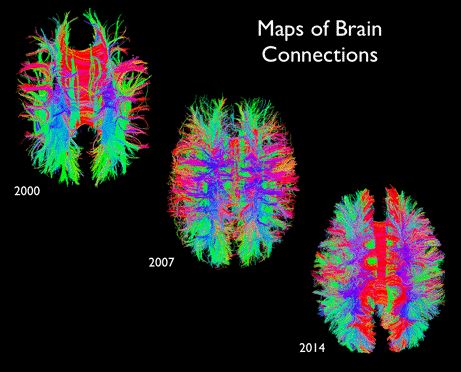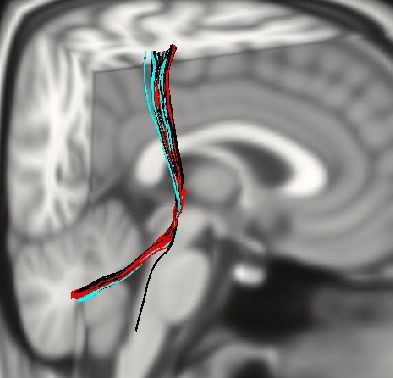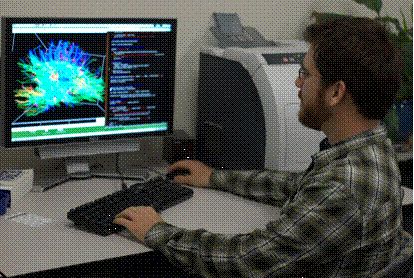Brain Imaging Center to Participate in Research Initiative Sponsored by NFL and GE




When the Broncos and the Seahawks meet on the gridiron for Super Bowl XLVIII, player and team statistics — passer ratings, rushing yards, sacks and fumbles — will be tossed around like, well, a football.
One statistic not likely to be mentioned: the number of players on each team who have sustained concussions over the course of the 2013-14 season — five and six, respectively, according to the National Football League (NFL) Injury Report. And some players have suffered more than one.
To address health issues related to head injuries — which may not appear until long after a player has retired — the NFL has teamed with GE to create the Head Health Challenge, a $20-million research initiative. Among the 16 round-one winners is Scott Grafton, a professor in UC Santa Barbara’s Department of Psychological and Brain Sciences and director of the campus’s Brain Imaging Center.
The goal of the Head Health Challenge is to improve the safety of athletes as well as that of members of the military and anyone else who has experienced mild traumatic brain injury. The winners, each of whom will receive a $300,000 award to advance his or her research, were selected from more than 400 entries from 27 countries.
“Our effort is in developing imaging methods that serve as biomarkers for mild brain injury,” said Grafton. “Once you have a biomarker, you have a whole new toolbox for identifying appropriate therapies.”
Over the past few years, researchers and medical professionals have recognized that repeated concussions can lead to a neurological condition called chronic progressive traumatic encephalopathy. “It’s a progressive degeneration of the brain,” Grafton explained. “A lot of football players have been developing memory loss and other problems over the last decade. We don’t know how many have this condition.”
Hence, the Head Health Challenge, launched in March 2013 as part of the Head Health Initiative. This four-year, $60-million collaboration between GE and the NFL seeks ways to speed diagnosis and improve treatment for mild traumatic brain injury. The initiative includes a research and development program to evaluate and develop next-generation imaging technologies to improve diagnosis that would allow for targeted treatment therapies.
Grafton and his colleagues at the Brain Imaging Center are developing novel software tools for determining if — and how — the connections that transmit information across different parts of the brain are damaged after head injury. Using state-of-the-art magnetic resonance imaging (MRI) scans, the researchers are working to identify damage to individual connections anywhere along their path and determine which brain areas have become disconnected after injury.
Detecting mild brain injury — the kind that shows up on standard MRIs or CAT scans — is very difficult, according to Grafton. And that becomes an issue for coaches and team doctors who have to decide if and when a player who has sustained a head injury can go back on the field.
“We’ve developed methods for looking at deep white-matter tracks,” Grafton said. “The brain is like a computer, with processors connected by bunches of cables. Head injury can cause shearing of the wires and disconnection. In its simplest form, the biomarker we’re working on is an image of sections through the brain that can show the particular cables or sets of cables that are injured, and which part of the brain is being disconnected.
“Our algorithms are really tuned into looking at changes in individual people rather than saying, well, on average, a person with a concussion is going to have an injury in the front half of the brain — or in the back half,” he continued. “That’s not specific enough. We want to know exactly which cables are getting damaged.”
That information then allows for cognitive therapy to be tailored to the injured area. “And we can track a patient’s process with repeated scans over time to assess how well he or she is responding.”
While the NFL is a collaborator in the Head Health Initiative, the resulting medical advances are meant to reach far beyond the football field. They also hold promise for the military, in treating soldiers who have sustained head injuries from improvised explosive devices and other blasts. “The biomarker can help identify who has a mild traumatic brain injury due to a concussion versus post-traumatic stress syndrome,” Grafton explained.
NFL Commissioner Roger Goodell said of the research initiative: “These studies hold the promise of advancing brain science in important ways. The health and safety of our players is our top priority, and this challenge extends that commitment to the general population as well. We hope the innovative approaches proposed by these winners will have a lasting impact on the treatment of head injuries.”
“We launched the challenge as a call to action to fast-track advancement in head health,” said Sue Siegel, chief executive officer of GE Ventures and Healthymagination, GE’s $6 billion global commitment to provide better health for more people by lowering costs and increasing access. “The challenge has shown us a remarkable number of breakthrough ideas that deserve attention, investment and further research. By advancing the work of these winners, we will better understand brain injuries suffered by athletes and members of the military and improve our knowledge of the brain overall, which could help improve our understanding of neurodegenerative diseases such as Alzheimer’s and Parkinson’s.”



